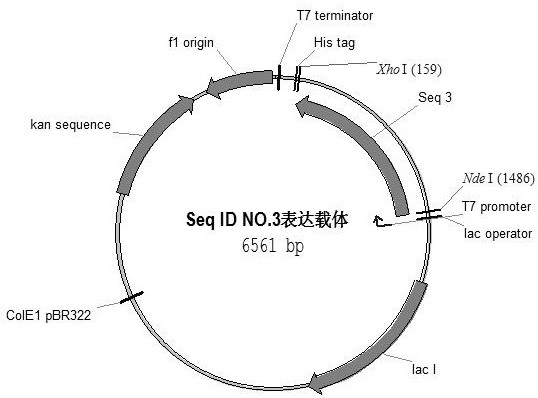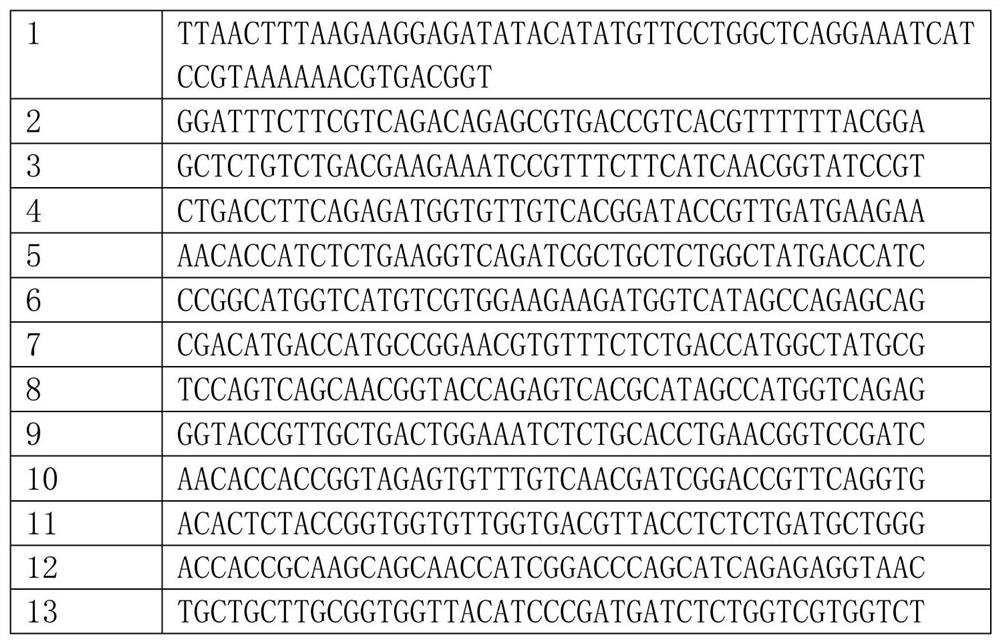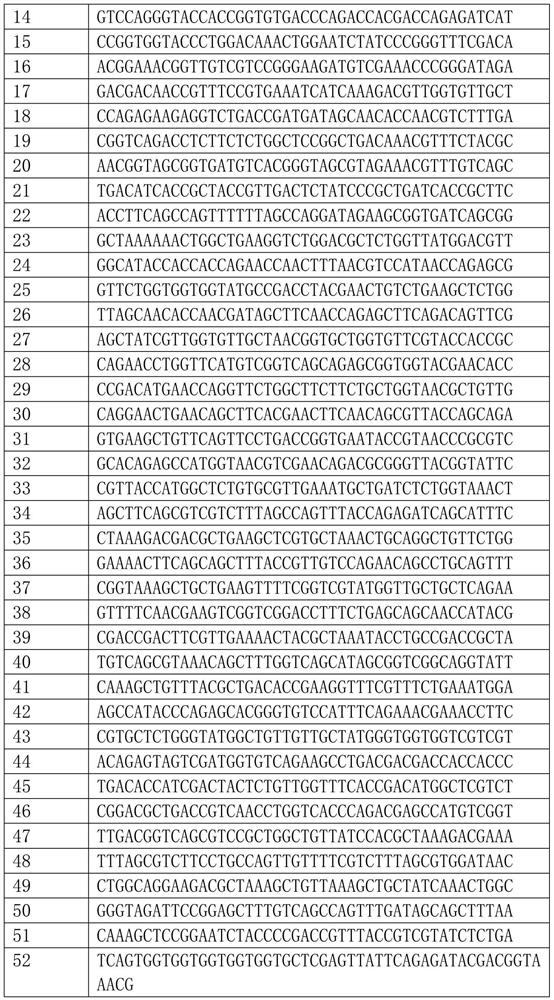A kind of method utilizing escherichia coli fermentation to produce thymidine phosphorylase
A technology of thymidine phosphorylase and Escherichia coli, which is applied in the field of bioengineering, can solve problems such as difficult removal of optical isomers, danger of environmental pollution, and complicated separation and extraction, so as to improve total enzyme activity, reduce production costs, and facilitate Promoted app performance
- Summary
- Abstract
- Description
- Claims
- Application Information
AI Technical Summary
Problems solved by technology
Method used
Image
Examples
Embodiment 1
[0020] Escherichia coli MG1655 was cultured in LB medium at a controlled temperature of 37.0 °C and 180 rpm for 1 day, the precipitate was collected by centrifugation, and the genomic DNA of Escherichia coli MG1655 was extracted and purified with the DNA extraction and purification kit QiAamp Kit (Qiagen, Germany).
[0021] PCR amplification of Escherichia coli MG1655 genomic DNA was carried out with Pfu high-fidelity enzyme, and the primers used were
[0022] 1655TP-F 5'ATGTTTCTCGCACAAGAAATTATTCG 3'
[0023] 1655TP-R 5’TTATTCGCTGATACGGCGATAGA 3’
[0024] Since the GC content of the DNA of Escherichia coli MG1655 is close to 50%, it was directly amplified using Pfu high-fidelity enzyme. Afterwards, the amplified fragment was treated with Taq polymerase at 72°C for 10 minutes, and base A was added to the 3' end of the DNA. Afterwards, it was connected to the pMD19T-simple (Takara Bao Biological Company, Beijing) cloning vector, and a single clone was picked and sent to Nanjin...
Embodiment 2
[0026] Through the method of whole gene synthesis, the secondary structure and codon bias of the gene are adjusted to achieve high expression in Escherichia coli. At the same time, five amino acid mutations at the following positions were introduced during synthesis: L10A, A209G, F210G, A221V, A413D, using Primer Premier (http: / / primer3.ut.ee / ) and OPTIMIZER (http: / / genomes.urv. es / OPTIMIZER / ) to design, and ensure that the Tm difference is controlled within 3°C, and the primer length is controlled within 50 base, the following primers are obtained:
[0027]
[0028]
[0029] The above primers were synthesized, and the obtained primers were dissolved in double-distilled water, and then added to the following reaction system, so that the final concentration of each primer was 30 nM, and the final concentration of the first and last primers was 0.6 μM.
[0030] 2mM dNTP mix (2mM each dNTP) 5μl 10×Pfu buffer 5μl Pfu DNA polymerase (10U / μl) 0.5μl ...
Embodiment 3
[0033] Pick a single colony of Escherichia coli containing the expression vector of SEQ ID NO.3 and inoculate it in 10ml of high-pressure sterilized medium: tryptone 10g / L, yeast extract 5g / L, disodium hydrogen phosphate 3.55g / L, phosphoric acid Potassium dihydrogen 3.4g / L, Ammonium chloride 2.68g / L, Sodium sulfate 0.71g / L, Magnesium sulfate heptahydrate 0.493g / L, Ferric chloride hexahydrate 0.027g / L, Glycerin 5g / L, Glucose 0.8g / L, add kanamycin to 50mg / L. Cultivate overnight at 30°C, 250rpm. The next day, take a 1L Erlenmeyer flask and insert it into 100ml of autoclaved medium at an inoculation ratio of 1:100: tryptone 10g / L, yeast extract 5g / L, disodium hydrogen phosphate 3.55g / L, phosphoric acid Potassium dihydrogen 3.4g / L, Ammonium chloride 2.68g / L, Sodium sulfate 0.71g / L, Magnesium sulfate heptahydrate 0.493g / L, Ferric chloride hexahydrate 0.027g / L, Glycerin 5g / L, Glucose 0.3g / L, add kanamycin to 50mg / L. Cultivate at 30°C until the cell OD is 5-6, immediately place t...
PUM
 Login to View More
Login to View More Abstract
Description
Claims
Application Information
 Login to View More
Login to View More - R&D
- Intellectual Property
- Life Sciences
- Materials
- Tech Scout
- Unparalleled Data Quality
- Higher Quality Content
- 60% Fewer Hallucinations
Browse by: Latest US Patents, China's latest patents, Technical Efficacy Thesaurus, Application Domain, Technology Topic, Popular Technical Reports.
© 2025 PatSnap. All rights reserved.Legal|Privacy policy|Modern Slavery Act Transparency Statement|Sitemap|About US| Contact US: help@patsnap.com



